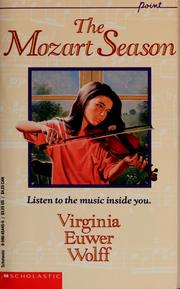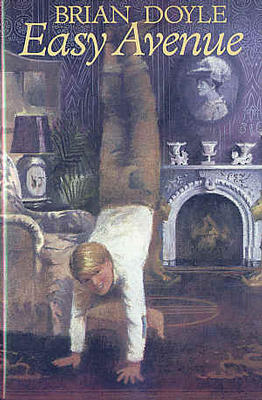Wolff, Virginia Euwer (1991) The Mozart Season. New York: Scholastic.

Opening lines: "In Mr. Kaplan's studio is a needlepoint pillow, on a chair. On one side of it is a violin. The other side says, 'A teacher is someone who makes you believe you can do it.'"
Allegra Shapiro is going into eighth grade. She loves playing the violin and is pretty good at it. Toward the beginning of the summer, just after her softball team fails to make the playoffs, she finds out that on the strength of her audition tape, she has been accepted into the prestigious Oregon Bloch Competition. She will compete at the end of the summer, if she decides to go for it. Over a summer that includes subbing for an injured violinist at a community orchestra concert, a visit from her rather odd aunt, family mysteries, and a quest to find the tune that a dancing homeless man has been looking for for decades, Allegra practices and focuses, and finally makes a decision.
This is not an action book, but it doesn't move slowly either. Allegra's first person narrative voice, her interesting life, and a plot with some twists and turns will keep students interested. Obviously, this will be an easy book to convince violin-playing students to read, but I think it might be worth suggesting that thoughtful non-musicians give it a shot as well. i would recommend it for strong fourth-grade readers and up.
There is nothing in this book that I noticed that would be offensive to parents or cause it to be challenged. I would probably work as a decent read-aloud, though it doesn't strike me as one that would grab all the students. This would be a great book for your classroom library, though.
Doyle, Brian (1988) Easy Avenue. Toronto: Groundwood.

Opening lines: "My last name is O'Driscoll and my first name is Hulbert. When I was little I couldn't say the word Hulbert very well. The word Hulbert came out something like Hubbo and everybody started calling me that. They still call me that. Hubbo. Hubbo O'Driscoll."
One of the reasons to read classic adolescent literature is to get a sense for how much it has changed over the last three or four decades. Easy Avenue is a funny and interesting book, but it isn't in any kind of a hurry to get to the plot of the book. When I was six chapters in, I almost gave up on it. There was no real plot development at that point and I wasn't sure I even liked the main character, Hubbo yet, and the period wasn't always described in a way kids can relate to. Also, in the first half of the book, there are cruel pranks that go unpunished. In fact, I am not sure why I kept reading.
But I did. And here is the thing. At the end of this book Hubbo shows himself to be a truly Nobel young man in a way that is very uplifting, and believe it or not, made the first half of the book worthwhile.
I am not sure what kind of kid would like this book. It is short (only 118 pages) and so it might make a good read aloud if you can hold students attention for the first half. There is a girl in the story whose reputation is unfairly damaged. The language is not explicit, but I suppose could cause very sensitive parents to object (though I would find that highly unlikely). The vocabulary is at a level that a fifth-grader could understand it, but it might be better for middle school (especially for the kid who always picks the shortest book). I wouldn't call this one a must-have, but if you stumble across it, it would not be a bad addition to your classroom library.
Seredy, Kate (1935) The Good Master. New York: Scholastic.
Opening Lines; "Jancsi was up bright and early that morning and at work milking the cows. He was so excited that he couldn't stay in bed. For today Cousin Kate was coming."
One of the things books should do is give readers a good into other cultures, times, and worlds. This book brings the reader into Hungary around the turn of the 20th century. The question, however, is what we do with a culture that has values that may be at odds with the values of 21st century America. On the one hand, this is a heartwarming story about a rather difficult city girl who is sent by her parents to live with her Uncle and Aunt and cousin and through kindness and strictness, learns to behave correctly and becomes a delightful person to be around (and along the way we learn about Hungarian Easter Egg art and some other cultural details). On the other hand, it is a story that describes corporal punishment as being a good thing, moves from breaking gender stereotypes to reinforcing them, and is particularly harsh in generalizing "gypsy" children as "swarms of dirty little wretches..." who "...steal like magpies." There are some parallels between this book and Shakespeare's Taming of the Shrew particularly in the way that Kate is tamed. There are some negative depictions of the city as an exclusively unhealthy place. There are also truly wonderful moments, such as when Kate is reunited with her dad. So this book is kind of all over the place.
I would have a hard time imagining this book being used in a straightforward way in a classroom, but I could see it as an excellent subject of a critical response by fifth graders and up. If it is used in that way, it would be less likely to be objected to by parents. Read it yourself and see what you think.
No comments:
Post a Comment